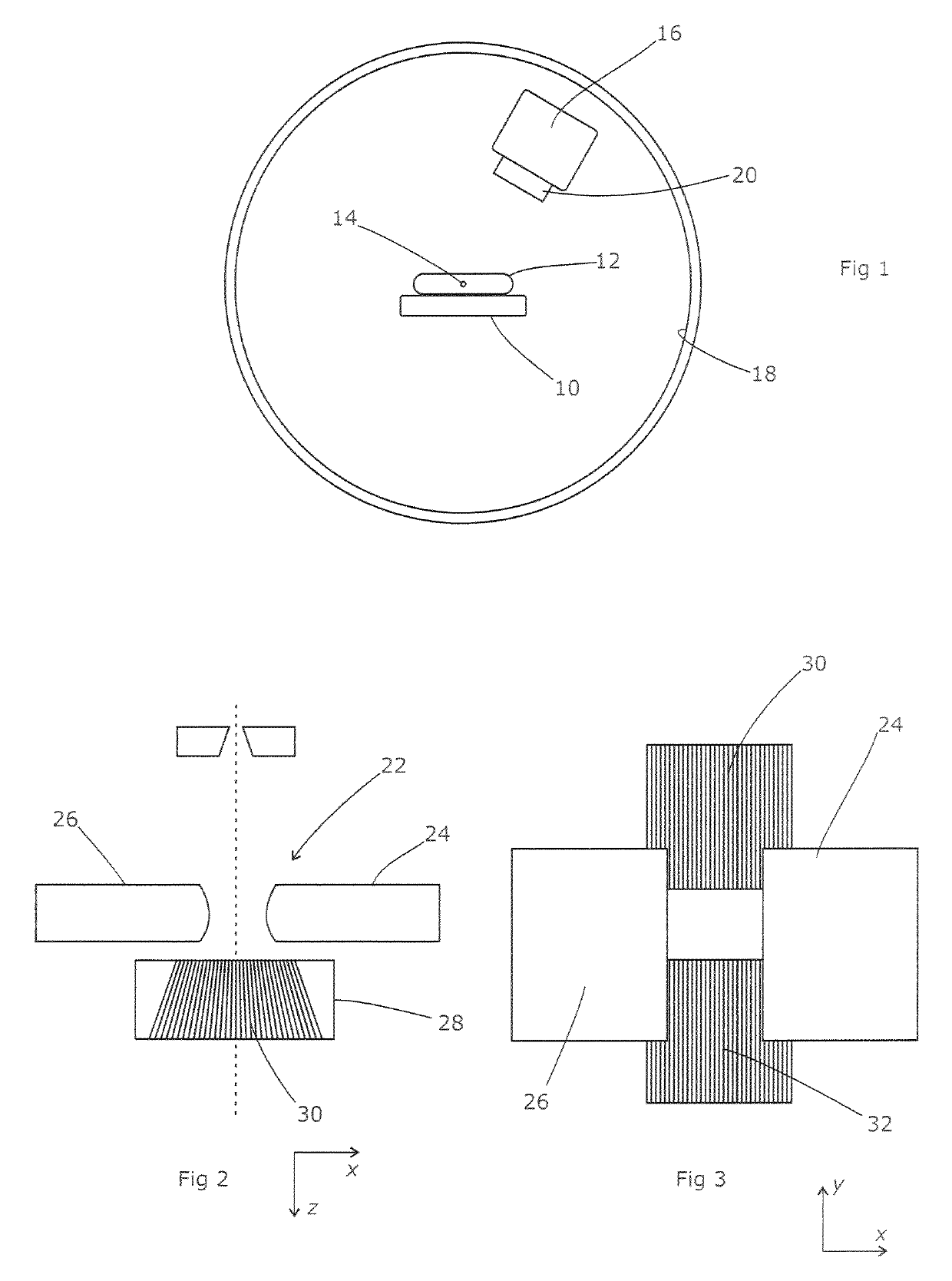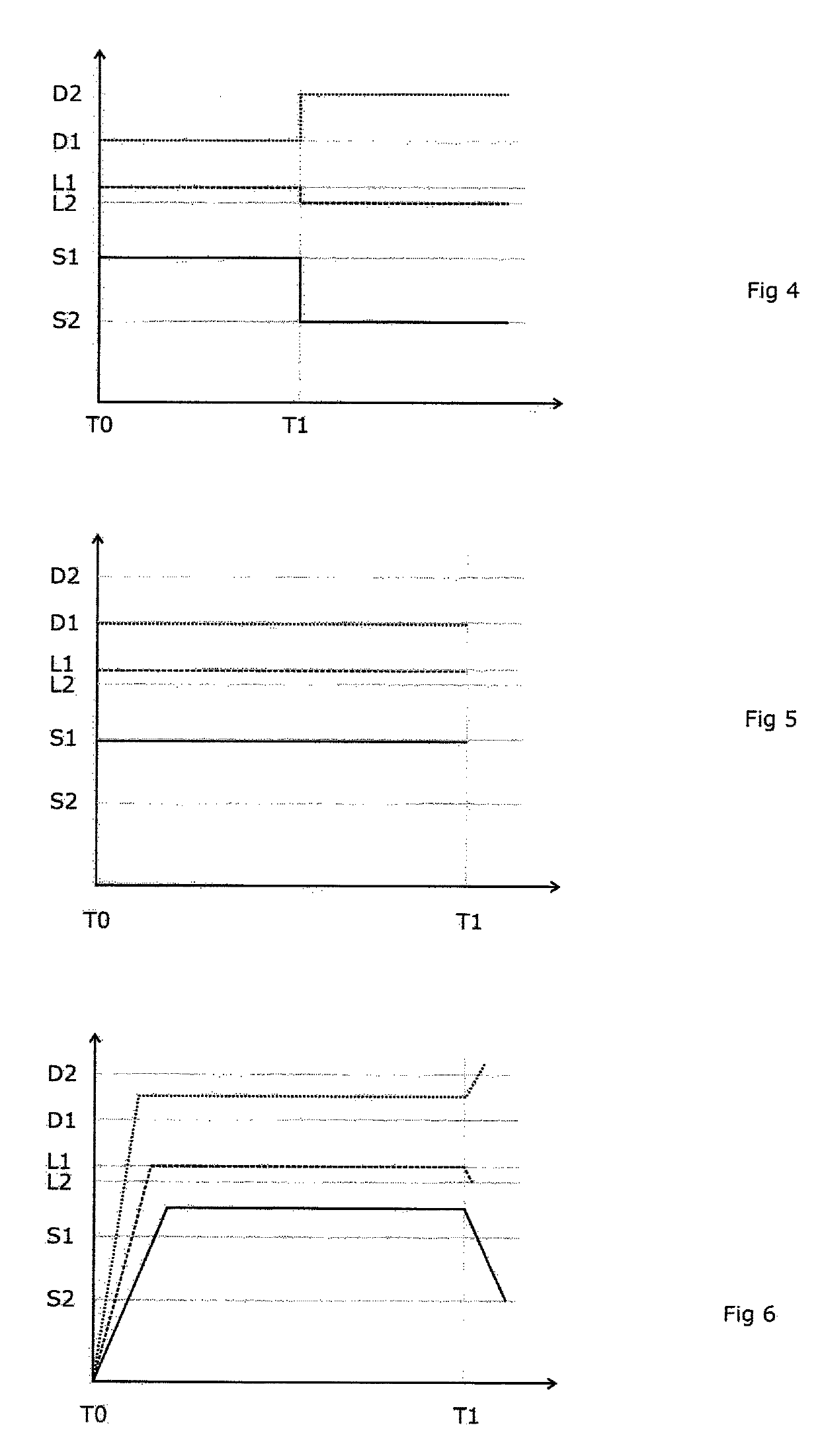Radiotherapy apparatus using inertial characteristics for delivery planning
a radiotherapy apparatus and inertial characteristic technology, applied in radiation therapy, radiation therapy, x-ray/gamma-ray/particle irradiation therapy, etc., can solve the problems of reducing the tolerance of the apparatus as a whole, correspondingly more likely to indicate an error, and reducing the effect of system control architectur
- Summary
- Abstract
- Description
- Claims
- Application Information
AI Technical Summary
Benefits of technology
Problems solved by technology
Method used
Image
Examples
first embodiment
[0046]FIG. 9 shows the process flowchart for the treatment planning computer according to the present invention. This starts by accepting an intended dose profile 100 which reflects the dose profile that the clinician has prescribed, together with details of the three-dimensional structure of the patient. The latter may be in the form of a segmented CT, MRI or like form of scan, suitably registered to the coordinate system of the dose distribution. Segmentation is a process of marking a CT or MRI scan to indicate the nature of the various tissue types present within the scan, for example bone, soft tissue, tumorous tissue, water, air etc. These different tissue types have different rates of attenuation of x-rays and therefore are taken into account by the treatment planning computer. Registration is a process of aligning the scan so that it employs the same coordinate system as the other aspects of the system, including the dose distribution and the radiotherapy apparatus.
[0047]In t...
second embodiment
[0055]In this way, the invention creates a revised version of the treatment plan in which the inertia effects of the various elements of the radiotherapy apparatus are catered for, and as a result the treatment plan that is actually put into effect is much more closely achievable, with the advantages set out above. In the invention, the treatment plan is created ab initio with the inertial effects in mind and therefore need not be revised by the delivery control system.
[0056]FIG. 12 shows the process flowchart for the treatment planning computer according to a second embodiment of the present invention. This starts as with the first embodiment, by accepting an intended dose profile 100 which reflects the dose profile that the clinician has prescribed, together with details of the three-dimensional structure of the patient. The latter may be in the form of a segmented CT, MRI or like form of scan, suitably registered to the coordinate system of the dose distribution. In this embodime...
PUM
 Login to View More
Login to View More Abstract
Description
Claims
Application Information
 Login to View More
Login to View More - R&D
- Intellectual Property
- Life Sciences
- Materials
- Tech Scout
- Unparalleled Data Quality
- Higher Quality Content
- 60% Fewer Hallucinations
Browse by: Latest US Patents, China's latest patents, Technical Efficacy Thesaurus, Application Domain, Technology Topic, Popular Technical Reports.
© 2025 PatSnap. All rights reserved.Legal|Privacy policy|Modern Slavery Act Transparency Statement|Sitemap|About US| Contact US: help@patsnap.com



